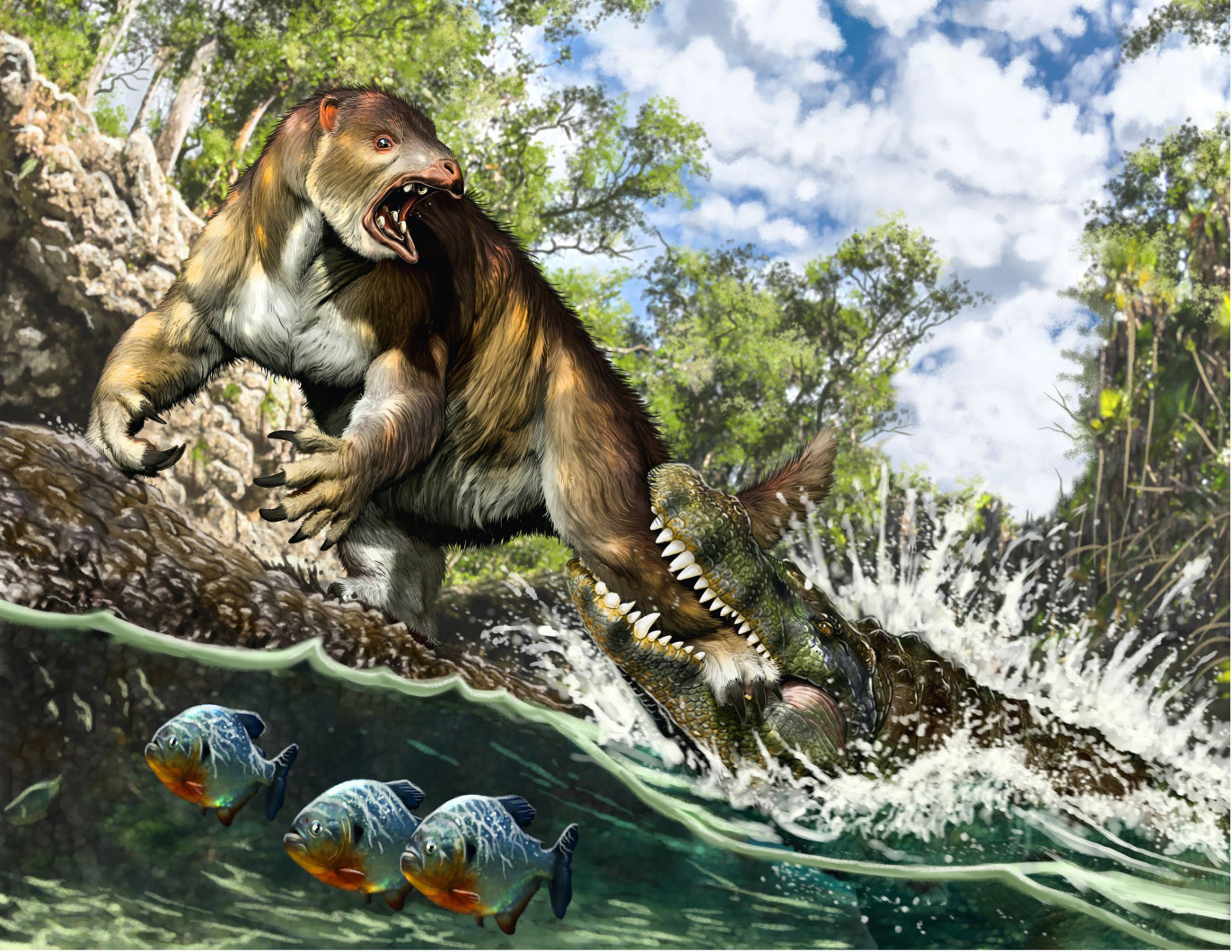It only took one 13-million-year-old bone for two paleontologists to reconstruct the dramatic encounter pictured above. That bone is a tibia, or lower leg bone, from an extinct ground sloth (not a giant ground sloth, just a 170 pound medium-sized one). The tibia has 46 tooth marks on it, made by the extinct caiman (a close relative of alligators) Purussaurus.
Read the paper by Pujos and Salas-Gismondi to see how, through a detailed taphonomic analysis of a single bone, they were able to infer not only what animal did the biting, but also how old it was. Unresolved: whether the caiman got the whole sloth or just the leg.

Reference:
Pujos F, Salas-Gismondi R. 2020 Predation of the giant Miocene caiman Purussaurus on a mylodontid ground sloth in the wetlands of proto-Amazonia. Biology Letters 16: 20200239. http://dx.doi.org/10.1098/rsbl.2020.0239
Featured image: Detail of Figure 2 from Pujos and Salas-Gismondi. Artwork by Jorge A. González.
